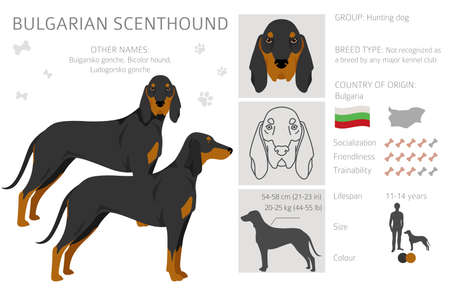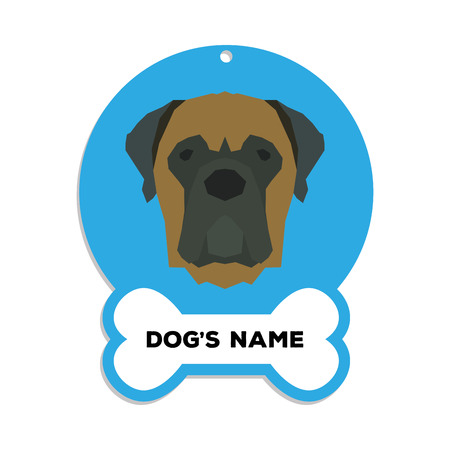Understanding Small Pet Grooming Needs
When it comes to small pets, grooming isnt just about keeping them looking cute—its essential for their overall health and happiness. Each type of small animal found in American homes, such as rabbits, guinea pigs, and hamsters, has its own unique grooming requirements that reflect their natural habits and body structures. Rabbits, for example, are meticulous self-groomers but still need regular brushing to prevent hairballs and matting, especially during shedding season. Guinea pigs require gentle brushing to keep their coats free of tangles and debris, along with regular nail trims to avoid overgrowth. Hamsters, on the other hand, often enjoy sand baths rather than water baths to keep their fur clean and oil-free. Recognizing these differences is the first step in creating safe, DIY grooming solutions that respect each pets instincts and well-being. By tailoring your approach and using natural products, you can make grooming a positive experience for both you and your furry friends.
Benefits of Natural and DIY Grooming Solutions
Choosing natural and homemade grooming products for small pets isn’t just a trend—it’s a safer, smarter way to care for our furry friends. Many commercial grooming products are designed with cost efficiency in mind rather than the unique needs of animals like hamsters, guinea pigs, rabbits, or ferrets. Because these small pets have delicate skin and are sensitive to harsh chemicals, using gentler, natural solutions can make a significant difference in their well-being.
Why DIY and Natural Products Are Safer
Natural and DIY grooming products typically use ingredients you can easily recognize—think oatmeal, coconut oil, or baking soda. These ingredients are less likely to cause allergic reactions or irritate sensitive skin. With homemade recipes, you control what goes into the mix, ensuring that there are no hidden toxins or artificial fragrances that could harm your pet.
Common Hazards Found in Commercial Grooming Products
| Hazardous Ingredient | Potential Risks for Small Pets |
|---|---|
| Sulfates & Parabens | Skin irritation, allergic reactions, potential hormone disruption |
| Artificial Fragrances | Respiratory issues, sneezing, skin allergies |
| Alcohols | Dryness, flakiness, increased sensitivity |
| Dyes & Colorants | Toxicity if ingested during self-grooming |
Long-Term Benefits of Going Natural
Using DIY grooming solutions allows you to customize treatments based on your pet’s specific needs. For example, some pets may need extra moisture due to dry environments while others may benefit from soothing anti-itch formulas made from chamomile tea or aloe vera gel. Over time, a consistent regimen of natural care helps maintain healthy fur and skin, reduces stress during grooming sessions, and strengthens the bond between you and your pet by making them feel safe and comfortable.

3. Common Ingredients for DIY Pet Grooming
When it comes to creating safe and natural grooming solutions for your small pets, knowing which ingredients are both effective and pet-friendly is essential. Luckily, many household staples found across the U.S. can double as excellent grooming aids. These common ingredients are not only affordable and easy to find at your local supermarket or health store, but they’re also gentle enough for sensitive little companions like rabbits, guinea pigs, hamsters, and ferrets.
Oatmeal: Soothing and Moisturizing
Oatmeal is a superstar when it comes to soothing itchy or irritated skin. Finely ground oats can be mixed with warm water to create a gentle paste or bath soak that calms inflamed skin and provides relief from dryness. This ingredient is widely used in both human and pet care products because of its anti-inflammatory properties and ability to lock in moisture—perfect for pets with sensitive skin or mild allergies.
Coconut Oil: A Natural Conditioner
Coconut oil is another favorite for DIY pet grooming enthusiasts. It’s naturally antibacterial and antifungal, making it an ideal choice for conditioning fur and moisturizing dry paws or ears. Just a small amount massaged into your pet’s coat can add shine, reduce tangles, and help manage minor skin irritations. Be sure to use pure, unrefined coconut oil and always monitor your pet after application, as some animals may try to lick off the oil.
Baking Soda: Odor Neutralizer
Baking soda is well known for its odor-absorbing abilities. In pet grooming, it works wonders as a dry shampoo alternative. Simply sprinkle a small amount onto your pet’s fur (avoiding the face), gently massage it in, then brush thoroughly to remove any excess. This helps keep your furry friend smelling fresh between baths without exposing them to harsh chemicals.
Other Helpful Ingredients
Additional safe options include apple cider vinegar (diluted with water) for a natural flea repellent and mild disinfectant, aloe vera gel (pure, without additives) to soothe minor cuts or scrapes, and unscented baby wipes for quick cleanups. Always avoid essential oils unless you’ve confirmed their safety for your specific pet species—many common oils are toxic to small animals.
Tips for Choosing Ingredients
When selecting any ingredient for your DIY grooming routine, opt for organic and unscented versions whenever possible. Avoid anything with added fragrances or dyes that could irritate your pet’s delicate skin. And remember: even natural ingredients can cause reactions in some pets, so introduce new products slowly and watch closely for signs of discomfort.
4. Simple DIY Grooming Recipes and Methods
When it comes to grooming your small pets, natural ingredients are not just a trend—they’re a safe and effective way to keep your furry friends clean without harsh chemicals. Here’s how you can create gentle, pet-safe grooming products at home using common household ingredients. These step-by-step recipes are designed for American pet parents who want to keep things simple, budget-friendly, and eco-conscious.
Gentle DIY Pet Shampoo
Skip the store-bought stuff! Here’s a basic recipe that works for most small pets like rabbits, guinea pigs, or ferrets:
| Ingredient | Amount |
|---|---|
| Unscented Castile Soap | 1/4 cup |
| Distilled Water | 1 cup |
| Coconut Oil (melted) | 1 tsp |
| Aloe Vera Gel (pure) | 1 tbsp |
| (Optional) Oatmeal Powder* | 1 tbsp |
*Grind plain oatmeal into a fine powder for extra soothing power.
Instructions:
- Combine all ingredients in a clean bottle and shake well.
- Wet your pet’s fur with warm (not hot!) water.
- Lather gently, avoiding eyes, ears, and nose.
- Rinse thoroughly and towel dry.
This shampoo is mild enough for monthly use and helps moisturize delicate skin.
Natural Freshening Spray
If your little pal needs a quick refresh between baths, try this easy spray:
| Ingredient | Amount |
|---|---|
| Distilled Water | 1/2 cup |
| Pure Witch Hazel (alcohol-free) | 2 tbsp |
| Dried Lavender Buds or Chamomile Flowers (optional) | 1 tsp |
Instructions:
- If using herbs, steep them in hot water for 10 minutes, strain, and let cool.
- Add witch hazel to the cooled liquid.
- Pour into a spray bottle and mist lightly over your pet’s coat, avoiding face and sensitive areas.
This spray can help neutralize odors naturally—perfect for busy days or after playtime!
Nourishing Fur Conditioner
A simple conditioner will help reduce static and make brushing easier:
| Ingredient | Amount |
|---|---|
| Coconut Oil (melted) | 1 tsp |
| Aloe Vera Gel (pure) | 1 tbsp |
| Distilled Water | 1/2 cup |
| (Optional) Vitamin E Oil Capsule (pierced) | 1 capsule |
Instructions:
- Mix all ingredients in a spray bottle and shake well before each use.
- Mist lightly over damp fur after bathing; comb through gently.
- No need to rinse—let air dry while brushing out tangles.
This leave-in formula is especially helpful during the dry winter months when static can be an issue for small pets living indoors.
5. Safety Tips and Grooming Best Practices
Do’s: Creating a Safe Grooming Environment
Always start by setting up a calm, comfortable space for your small pet. Use non-slip mats on tables or floors to prevent accidental slips. Gather all your natural grooming supplies—like oatmeal shampoo, coconut oil, or homemade brushing sprays—before you begin. Test every new product on a small patch of your pet’s skin first to check for reactions. Speak softly and handle your pet gently to reduce anxiety. Short sessions are best; reward your pet with treats and praise to build positive associations.
Don’ts: Common Mistakes to Avoid
Avoid using human grooming products, as they can be too harsh or toxic for pets. Never rush the process, restrain your pet forcefully, or skip checking for tangles and mats that could cause pain if ignored. Don’t use essential oils unless you’ve confirmed they’re safe for your specific animal—many are harmful to rabbits, guinea pigs, and hamsters. Steer clear of scented or alcohol-based wipes, which can irritate sensitive skin.
Spotting Allergic Reactions
Monitor your pet closely during and after grooming for signs of allergies: redness, swelling, excessive scratching, sneezing, or watery eyes. If you notice these symptoms, rinse the affected area immediately with plain water and discontinue use of the product. Document what was used so you can avoid it in the future.
When to Consult a Vet
If your pet shows persistent discomfort, hair loss, open sores, or respiratory distress after grooming, contact your vet right away. It’s always better to seek professional advice than risk complications from home remedies gone wrong. Remember: the goal is a happy, healthy pet who enjoys their spa time as much as you do!
6. When to Seek Professional Help
Even with the best DIY grooming routines and natural, safe products, there are moments when your small pet’s needs go beyond what you can handle at home. Recognizing these signs early is crucial for your pet’s health and well-being.
Warning Signs That DIY Isn’t Enough
If you notice persistent matting that won’t brush out, skin irritation that doesn’t improve, or unusual odors coming from your pet despite regular cleaning, these may indicate underlying issues. Excessive scratching, biting, bald patches, lumps, or wounds are all red flags. Additionally, if your pet becomes uncharacteristically aggressive, fearful, or stressed during grooming sessions, it’s time to pause and reassess.
When Home Remedies Fall Short
Natural solutions are gentle and effective for everyday care, but they aren’t always equipped to address medical concerns. Homemade shampoos and sprays shouldn’t be used on open sores or infections. If you spot fleas or ticks that aren’t going away, see signs of fungal infections (like ringworm), or if allergies seem to be worsening, don’t rely solely on home treatments.
Consulting a Pro: What to Expect
Professional groomers have specialized tools and techniques for safely handling tricky mats, trimming nails without stress, and thoroughly cleaning sensitive areas. More importantly, veterinarians can diagnose skin conditions, recommend safe medications, and provide guidance tailored to your pet’s unique needs. In the U.S., many vet clinics offer “wellness checks” that include grooming advice—don’t hesitate to ask!
Ultimately, knowing when to reach out for professional help is part of being a responsible pet owner. Trust your instincts; if something feels off or if you’re unsure about how to proceed safely with your DIY approach, seeking expert support ensures your furry friend stays healthy and happy.


